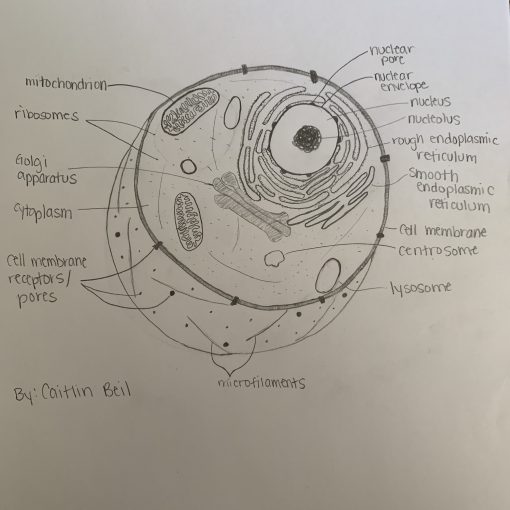Prevention of Mosquito-borne Illness
Mosquito-borne illnesses pose a continuing threat to public health throughout the world. Diseases such as malaria and yellow fever are two of the most commonly known infections transmitted by mosquitoes and generally considered to be confined to the tropics. As evidenced by the emergence of West Nile Virus in New York City in 1999 and of Zika virus in the Americas in 2016, even areas not commonly associated with these diseases are still susceptible. The failure to eradicate malaria and the development of insecticide resistance by mosquitoes illustrate the difficulty in containment of mosquito-borne illnesses. Currently, prevention efforts are relegated to control of mosquito populations and reducing human exposure to mosquitoes in both endemic and non-endemic regions. Researchers have had limited success in vaccine development for many of the diseases that can be transmitted by mosquitoes and have looked to technology, such as genetic engineering, for more promising results in managing mosquito populations to reduce cases of the diseases they transmit.
Controlling mosquito populations relies on integrated pest management utilizing environmental, biological and chemical approaches. Reducing mosquito breeding sites is a primary focus of the environmental aspect and can be an inexpensive but effective means of mosquito control. This involves removal of standing water sources where mosquitoes lay their eggs and larvae mature and requires a community-wide effort. Birdbaths, buckets, toys and discarded tires can all serve as a breeding ground for these insects that should be eliminated to prevent water collection (3). Public education and vigilance is essential to this effort.
In nature, control of breeding sites can be more difficult to achieve. Ponds, retention basins, swamps and marshes all serve as ideal places for mosquitoes reproduce. Draining these sites or creating ditches to encourage flow of water may not be possible based on the topography of the area. In these situations, biological controls can be utilized to manage the larvae population. Introducing larviferous fish to closed water systems provides an effective predator to mosquito larvae to help control the population. Sites that aren’t conducive to hosting fish populations, such as retention ponds that only fill from seasonal rains, are better treated using Bacillus thuringiensis var. isrealensis (Bti). This bacteria naturally produces toxins that negatively impact mosquito larvae and is available commercially for use by the public (1).
Adult mosquito populations can be more difficult to control due primarily to their mobility and rely on a chemical insecticides. There are a number of options approved by the Environmental Protection Agency. Community spraying campaigns can provide widespread application via aircraft or truck. These methods utilize extremely small droplets that allow them to stay in the air for prolonged periods of time to kill mosquitoes through contact. There are also a variety of commercial products for use by the public to treat their property that involve ground application. Chemical insecticides provide a more immediate reduction in adult populations, but can lead to the development of insecticide-resistant mosquito populations and negative environmental impacts (3).
Controlling mosquito population can be effective in urban and suburban areas, this is less practical in more rural or remote areas. While ditches created by human activity can be filled in, other temporary sites of standing water may be harder to manage due to the unpredictability of rainfall and evaporation. Biological controls would be a wasted effort in many of these sites since the water remains for only a few days, but mosquitoes are still able to breed and mature in that time. Attempts to control or eradicate the population through chemicals, most notably with DDT, resulted to the rise resistant populations that complicate mosquito control efforts. In these areas, reducing exposure to mosquitoes has become more practical and effective (5).
Nets and screens can effectively limit exposure to mosquitoes in areas where population control is impractical. The development and use of insecticide treated nets in Africa has been shown to reduce deaths in children by 20%, according to the Centers for Disease Control. These nets are treated with pyrethroid and have been found to be more effective than the use of untreated nets, although the rise of resistance continues to be a complicating factor. Funding for these nets can be challenging and relies mostly on donations, but usage of the nets also requires public health outreach to educate vulnerable communities about their benefits (2).
Conventional efforts at population control and reducing exposure are temporary solutions to a long-term issue. In search of alternatives, researchers have been working to genetically engineer mosquitoes. One such company, Oxitec, has created a transgenic male mosquito with DNA encoding for a deadly gene. This gene is for a transcriptional activator which is a protein that binds to DNA and other proteins involved in transcription. The defective transcriptional activator induces a feedback loop of transcription that drives excess protein production and kills the organism. In the lab this gene is repressed utilizing tetracycline, but once released the mosquitoes are able to breed with wild mosquito populations before succumbing to its effects. This passes along the gene to the next generation of mosquitoes in the wild and significantly reduces the mosquito population. There are concerns about the potential for these transgenic mosquitoes to pass along genes that make wild mosquitoes an even greater threat than they currently are. Field studies underway are still evaluating the full impacts that the transgenic mosquitoes are having on the local populations (4).
Mosquito-borne illnesses have long plagued mankind and continue to be a major public health concern. Short of finding an effective eradication strategy for all species that transmit disease, population control and exposure avoidance are essential to reducing the incidence of these diseases. Each of these relies on community-wide awareness and participation. Advances in technology may lead to more effective population control efforts through genetic modification, but it’s still too soon to tell.
References
(1) Benelli, G., Jeffries, C.L., Walker, T. (2016). Biological control of mosquito vectors: Past, present, and future. Insects, 7(4), 52. https://doi.org/10.3390/insects7040052
(2) Centers for Disease Control and Prevention. (2019 Jan 4). Insecticide-treated bed nets. https://www.cdc.gov/malaria/malaria_worldwide/reduction/itn.html
(3) Environmental Protection Agency. (2016). Success in mosquito control: An integrated approach. https://www.epa.gov/mosquitocontrol/success-mosquito-control-integrated-approach
(4) Servick, K. (2016). Brazil will release billions of lab-grown mosquitoes to combat infectious disease. Will it work? Science. https://doi.org/10.1126/science.aaz5392
(5) Tizifa, T. A., Kabaghe, A. N., McCann, R. S., van den Berg, H., Van Vugt, M., & Phiri, K. S. (2018). Prevention Efforts for Malaria. Current tropical medicine reports, 5(1), 41–50. https://doi.org/10.1007/s40475-018-0133-y



